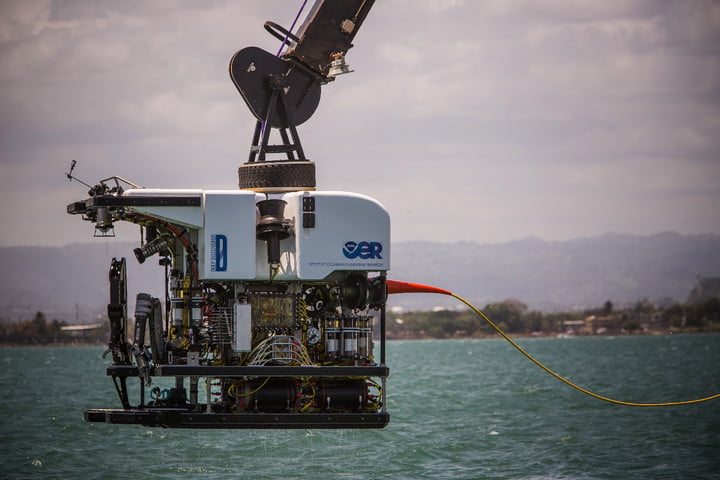NASA is launching a new project to help it better understand the deepest parts of space, without ever leaving Earth.
美国国家航空航天局(NASA)正在开展一项新的研究活动,即无需离开地球,就可以揭示太空最深处是否存在外星生命体。
The announcement, made last Tuesday, is part of the government space agency's Systematic Underwater Biogeochemical Science and Exploration Analog (SUBSEA) project and will help aid NASA's search for life in deep space, as well as better understanding of our own planet.
于上周二发表的这则声明,是该政府太空机构的系统水下生物地球化学科学和勘探模拟(SUBSEA)项目的一部分。该项目将帮助NASA探索海底火山口附近存在的生命体,并更好地了解我们自己的星球。
NASA believes the environment around a deep-sea volcano off the coast of Hawaii is similar to that of Saturn's moon, Enceladus.
NASA认为,夏威夷海岸附近的深海火山的周围环境,与土星的卫星土卫二很相似。

"Studying the extreme conditions where life can survive on Earth will help them understand the potential for life to exist on other ocean worlds in the solar system," NASA said on its website.
NASA在其网站上表示:“研究地球上生命生存的极端条件,将有助于了解太阳系其他行星海洋世界存在生命的可能性。”
As part of the SUBSEA project, the robots, named Hercules and Argus, will study the biology, geology and chemistry of the region.
作为SUBSEA项目的一部分,两个名为大力神和阿格斯的机器人将研究海底火山附近的生物、地质和化学情况。
NASA is teaming up with the National Oceanic and Atmospheric Administration and the Ocean Exploration Trust (OET) on the project. The OET is operating the robots, which were launched from its exploration vessel, Nautilus.
NASA正与美国国家海洋和大气管理局、海洋探索信托基金(OET)合作开展这一项目。OET负责从“鹦鹉螺”号探测船上发射机器人。
The SUBSEA team will spend three weeks at sea and will study the volcano and simulate human-robotic exploration to help with future deep-space missions, NASA said.
NASA表示,这支SUBSEA团队将在海底度过三周时间,研究海底火山并模拟人机探索,为未来寻找太阳系中外星生命做准备。













